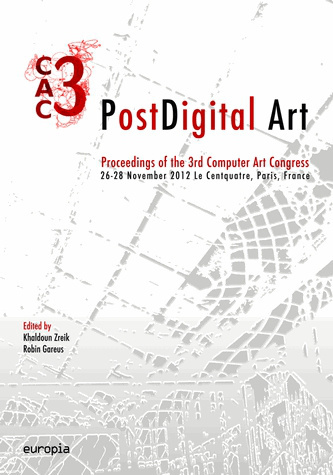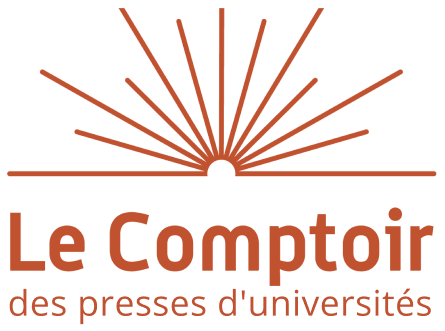Pau Alsina – The search for emergence in New Media Art practices;
Marcos Salazar Delfino – Brief Reflection on the Anonymity;
A. BillMiller, Anders Carlsson, – Future Potentials for ASCII art;
Blanka Earhart – Hyper-Production and the Value of Exquisite Corps on the Web;
Tania Fraga, Malu Fragoso – 21st Century Brazilian Computer (Experimental) Art;
Filipe Pais – The Post Digital Art is made of Paper, Cardboard and ABS;
Aurélien Michon, Cedric Flazinski, Clément Chalubert – On the separation between the esthetic and the functional - And how the digital realm will steal form;
Jérémy Raulet, Catherine Sauvaget, Vincent Boyer – From Paper to Portable Devices: How to script and read comics
Michaela Honauer, Jens Geelhaar – Designing Natural User Interfaces with Depth Sensing Technologies like the Kinect Sensor - A Tracking Framework for Artists and Designers;
Gaétan Darquié – New technologies and non technical students: making contact with creative digital writing;
Everardo Reyes – Disrupting 3D models;
Naai-Jung Shih – Digital Preservation of Ju Ming Stone Sculpture in Taiwan
Marc Veyrat, Franck Soudan – U-rss and the dark side of the moon;
Florent Di Bartolo – Connected creation: The Art of Sharing;
Alain Lioret – Cinema Beings;
Regina Freyman – Facebook Chronicles;
Subhajit Das, Florina Dutt – Architectural Ornamentation and Fabrication with Multi Agent System;
Juan Pablo Bertuzzi, Safwan Chendeb, Khaldoun Zreik – Autonomous social Avatars (AsA);
Cheng-Hsiu Chuang, Nan-Ching Tai – Digital Environment to Envision and Experience the Art of Light and Space;
Ferran Reverter, Pilar Rosado,Miquel Angel Planas, Eva Figueras – Art image classification using Bag-of-Visualterms representation;
Jo Briggs,Mark Blythe – Post Anxiety Art: Economies and cultures of digital painting.

